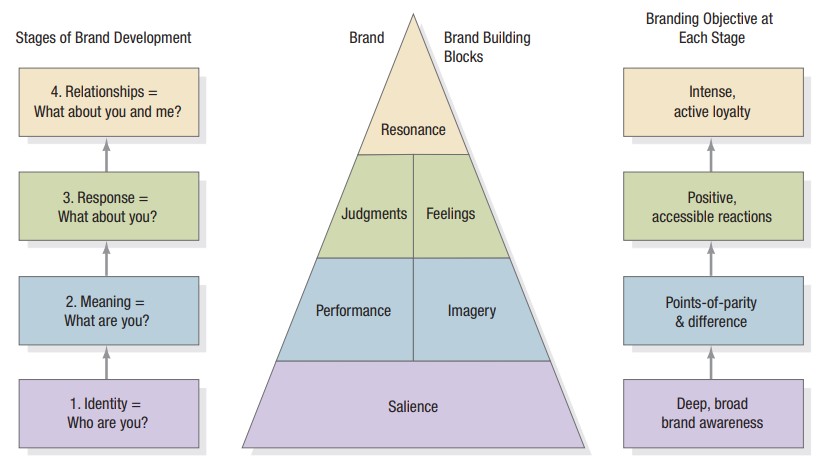While branding can feel like a vague concept, it's one of the most important elements of a marketing strategy.
Did you know that presenting a brand consistently across all platforms can increase revenue by up to 23%?
Plus, consistently presented brands are 3.5 times more likely to have excellent brand visibility than those with inconsistent branding.
In fact, 82% of investors say name recognition is an important factor guiding them in their investment decisions.
So, what does all this mean? Well, consistent branding leads to increased brand awareness which can then help gain investors and drive revenue to your business. Needless to say, branding is important for your business to succeed.
In this post, let's review what brand salience is, how you can increase your brand visibility, and how to measure it.
If you have high brand salience, then you have a strong brand presence that consumers recognize and think about when they need a product. If you have low brand salience, then consumers might not know your brand exists and therefore won't think of your brand when they need to make a purchase.
Essentially, brand salience is a similar metric as brand awareness except it's focused on measuring awareness during the actual purchasing decision instead of overall brand visibility.
For example, when someone wants to get a cup of coffee and is driving around, what's the first brand they think of? Probably Starbucks. When they want to buy tissues, they think of Kleenex. When they want to search for something online, they Google it.
All of these brands have transcended the perception of being a random company, and are now household names in their own right. Most people think of these brands and know of them whether they've been there or used those products before.
These brands have high brand salience. To have high brand salience, your customers need to think about your brand as the first solution to their wants or needs when they have to make a purchasing decision.
The concept of brand salience is actually psychological in nature. According to research done by Jenni Romaniuk and Byron Sharp, brand salience is "a brand's propensity to be noticed or come to mind in buying situations."
This means that you have to capture people's attention and be memorable enough for consumers to recall your brand when they're purchasing something.
For example, when a consumer has a choice of brands to purchase from, they'll rely both on their memory and attention salience. This means they'll recall brands they know and then see what captures their attention.
This process is actually scientific. People who have studied brand salience have studied the human brain -- how do people recall information and how does a brand associate positive memory structure with their product?
To increase your brand salience, some of your marketing campaigns probably won't even focus on persuading consumers to buy your product. The goal of many branding campaigns is to constantly reinforce positive associations with your brand. Familiarity is important. Constant marketing messages from a brand ensure that the brand is top-of-mind when a consumer is making a purchasing decision.
Brands create high brand salience by using distinctive brand assets that capture attention and create positive memories for their audience. This means your marketing assets promote positive storytelling and create a meaning associated with your brand. When you promote your values, you're differentiating your brand from the competition and increasing brand salience.
To create campaigns that will improve brand salience, think about the emotional impact of your assets. Your campaigns should be meaningful, authentic, and portray your values as a company.
All of this will help customers create a positive association with your brand and remember your brand when it comes time to make a purchase.
For example, let's say I want to buy some gum. When I think about gum, one of the first things I think of are the commercials for Extra. I've never forgotten those commercials because they were emotional and created a positive experience for me.
Now, when I think about gum, I usually buy Extra even though that brand has never been my favorite gum company (I used to buy Orbit). But since those commercials, I've leaned toward Extra because of the positive association and it's one of the first brands I recall because of those commercials.
Ultimately, brand salience is a combination of brand awareness, familiarity, relevance, frequent communication, and emotional connections between brand and consumer.
Now, you might be thinking, "This all sounds great, but how can I measure this and prove its effectiveness to my managers?"
Let's dive into that below.
How to Measure Brand Salience
Brand salience is rather conceptual in nature. Unfortunately, it's not a mathematical metric that is easily measured. So, what do brands do?
Well, one of the only ways to measure brand salience is through surveys and focus groups. It's important to ask your customers when they think of you, what they associate with your brand, and if they recall your company when making a purchasing decision.
You can ask customers whether they recall or notice your brand relative to competitors. Then, ask whether your brand is just thought of or sought after to determine how favorably your brand is judged.
Your survey can include descriptive assets to track your brand's distinctive assets. For instance, what tone of voice, logo, color, or slogan comes to mind when users think of soda. They might say red, because they've associated Coca-Cola branding with soda in general.
To measure this, you can present survey respondents with a randomized list of cues and attributes by asking them which brands they associate with each statement. It could be questions like "when I want to eat something quick and healthy" or "I know I will not overpay there."
Using a survey or focus group will help you determine how high your brand salience is compared to competitors.
Now, let's look at the brand salience model that you can use to strategize your brand positioning.
Brand Salience Model
In his book, Strategic Brand Management: Building, Measuring, and Managing Brand Equity, Kevin Keller developed a model for brand salience that has become popular in digital marketing.
In the graphic below, Keller creates a pyramid of building blocks to pay attention to when you're trying to increase your brand salience.

This model focuses on increasing deep, broad brand awareness by creating an identity that customers remember. At the foundation of the pyramid is salience, which you can increase by defining your brand in detail, frequently communicating with your audience, and using creative assets to tell a story.
Then, you create meaning and authenticity to differentiate your brand from the competition. And then, you use frequent messages to create positive, accessible reactions in your customers. And then you create loyalty by building a relationship and emotional connection with your audience.
With this model, you can increase brand salience, drive revenue, and even attract investors. Although this isn't the easiest metric to track, the science proves that focusing on branding will help your company become a household name for your customers.

